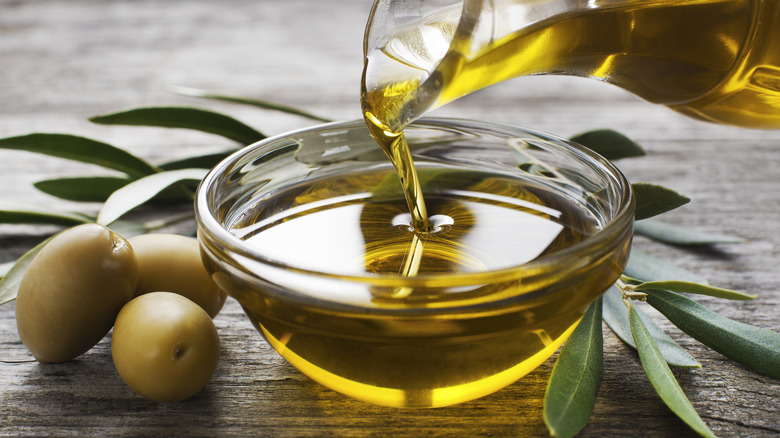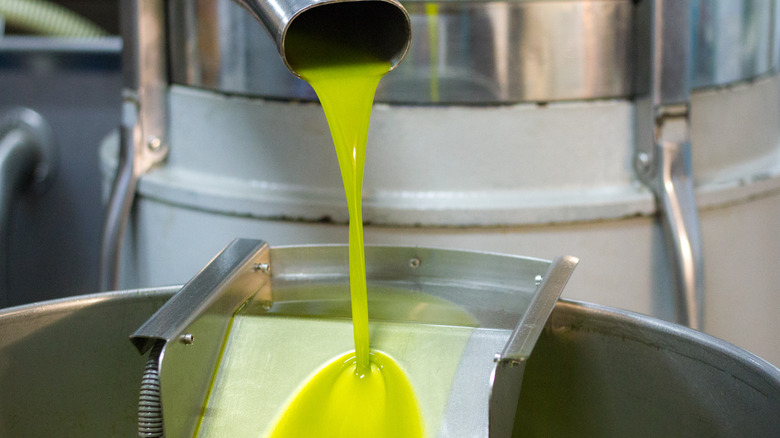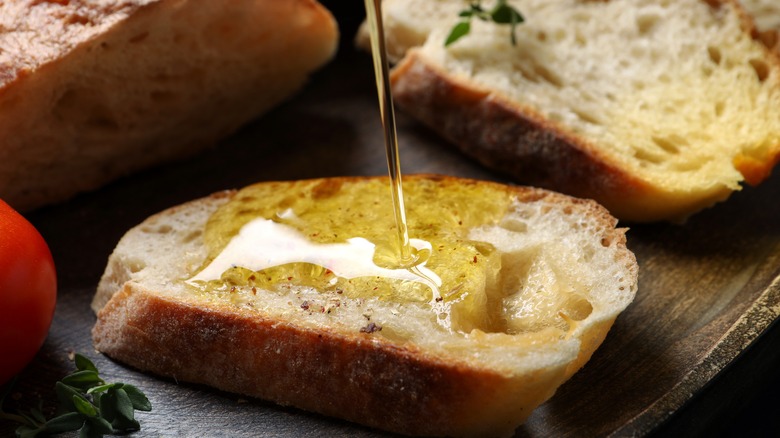What 'First Cold Pressing' Really Means For Quality Olive Oil
Despite many recipes that include a non-specific "olive oil" in the list of ingredients, there are actually a number of different kinds to choose from at the store, including extra virgin, pure, or light varieties. You may have noticed that, on the most expensive bottles, the words "first cold pressing" or "first cold pressed" may be emblazoned somewhere on the packaging. While it sounds more like coffeehouse or juice bar lingo, in the world of olive oil this is a very important distinction as this type is considered the best.
In simple terms, olives can be crushed or pressed several times to procure oil from them. The very first batch is considered the highest quality oil and is, therefore, labeled as the "first cold pressing" for notoriety as this kind of oil contains the best flavor and the most nutrients. The oils that come from subsequent pressings are still good for consuming and cooking, but are considered inferior to that initial batch. Another important note — extra virgin olive oil always comes from the first cold pressing of olives, adding to its quality and taste, too.
Cold pressing olives goes back to ancient times
To produce extra virgin olive oil through cold pressing, careful measures need to be taken in regards to temperature. That's because excessive heat can affect the taste and antioxidants present in olive oil, so processing the olives in relatively cool temperatures is considered ideal. This practice goes back to ancient times, when stone mills were primarily used to make the oil. The stone slabs would heat up throughout the day due to weather and friction, so the olives pressed in the morning (when the slabs were still cool) produced the best results, thus earning the distinction of "first cold pressing." While modern equipment is now used to make the oil, the label is a nod to these prime origins.
To make an oil that can be labeled as "first cold pressed," whole olives are processed with equipment that must maintain a temperature of no warmer than 80.6 degrees Fahrenheit. The flavors of first cold pressed olive oil can vary depending on the varietal and where they were grown. Extra virgin olive oil can be golden to green in color, and it can taste sharp, peppery, fruity, grassy, herbaceous, delicate, or complex. However, it shouldn't smell or taste downright rancid, metallic, or sour.
The best ways to use first cold pressed olive oil
Since bottles of first cold pressed oil are considered the best quality, you definitely want to enjoy the taste. Sure, you can still use it for sauteeing or roasting, but it's best consumed in its raw state. So, drizzle it over salads, fresh cheeses, raw vegetables, on top of hummus, and over bruschetta. It's great as a dipping oil for bread and as a finishing oil for meat, chicken, fish, veggies, even vanilla ice cream a la Giada De Laurentiis.
Many people around the globe simply enjoy a spoonful or shot glass full of delicious olive oil every day for its purported health benefits that may affect digestion and blood sugar levels, according to Healthline.
Using olive oil in cakes has become trendy and can be very tasty as well, but save your extra virgin oil for cake recipes in which the flavor of the oil is intended to stand out because it definitely will. While first cold pressed oil has always been the priciest of the bunch, be aware that prices are at the highest they've been in years and will likely go up, so stock up and store it wisely for maximum shelf life.



